a pile of 2015 photobooks
Posted: 25/12/2015 Filed under: Books | Tags: Arimoto Shinya, Bernàth Tamàs, Chris Killip, Dana Lixenberg, Dragana Jurišić, Evgenia Arbugaeva, Fukase Masahisa, Hashimoto Katsuhiko, Hayashi Tadahiko, Hayashi Tomohiko, Inge Morath, Kubota Tomoki, Laurent Chardon, Murakami Masakazu, Nuno Moreira, Samuel W Grant, Sato Haruna, Shiraishi Chieko, Siegfried Hansen, Suda Issei, Viktor Kolář Leave a comment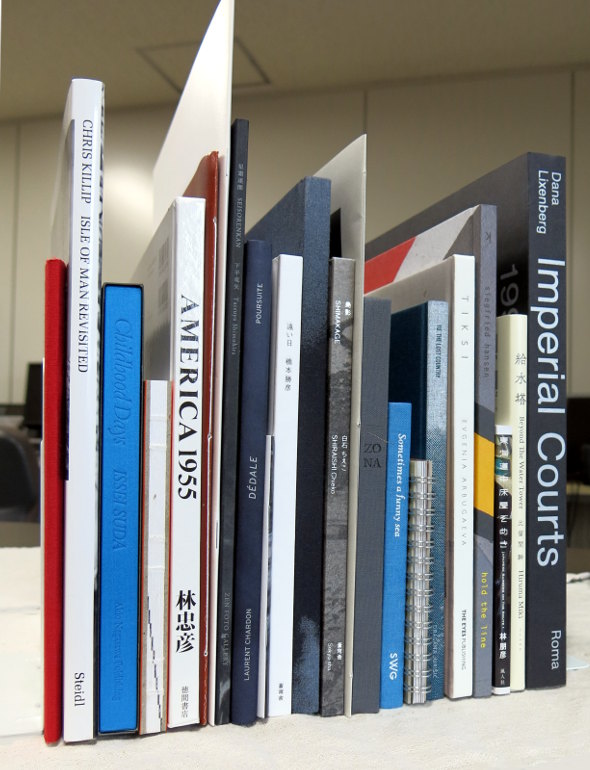
Lists of the photobooks of 2015 — you’ve already glanced at fifty; one more can’t hurt you. Here’s what I acquired during the year. And with one exception, I’m glad I did.
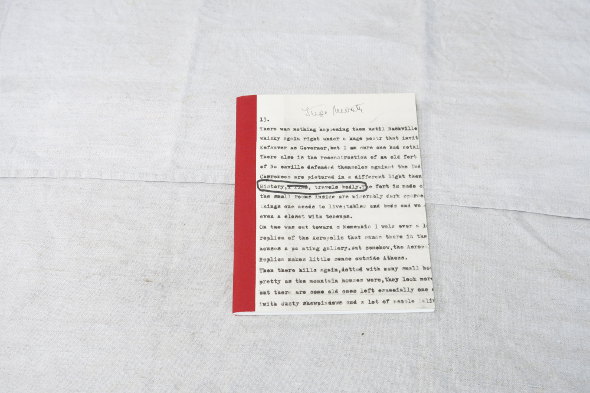
History travels badly. A booklet of miscellaneous photos by Inge Morath, interspersed with short and somewhat enigmatic quotations from her diaries. Too many of the photos are “landscape” format, so they’re either broken across the centre or (thanks to the generous margins) too small. Well, it’s a mood piece: go through this in the train and you’ll want to look through a larger book of her work in the evening. The title is a bit of a mystery: the text on the cover suggests that it’s from Tennessee at a time when Estes Kefauver was being encouraged to run as Governor, but this was an episode that even the omniscient Wikipedia hasn’t heard of. This minor mystery is a good opening for a booklet whose photos all have at least a touch of obscurity about them. It makes me want to dig out my copies of two of her other books.
Disclosure (tip of the hat to Pete Brook for this sterling idea): A friend nudged me into a crowdfunder for Danube revisited, and this was the goodie I later received.
Inge Morath, edited by Olivia Arthur and Lurdes R Basolí. History travels badly. London: Fishbar. ISBN 978-0-9569959-6-4. (Careful: this booklet seems to share its ISBN with a different book, Sudden flowers. The Morath booklet reviewed by Gabriela Cendoya.)
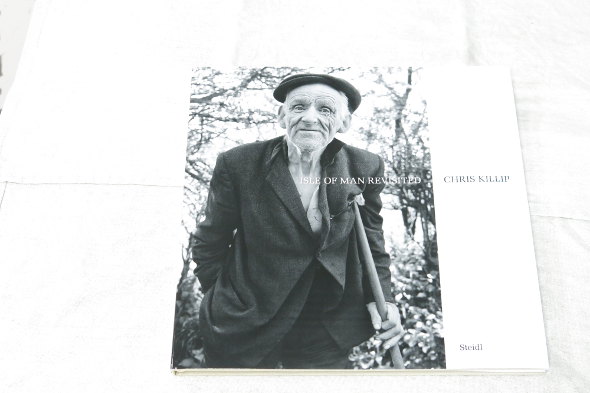
Let’s get the major disappointment out of the way first: For Isle of Man revisited, Chris Killip hasn’t revisited the Isle of Man. Instead, he and Steidl have revisited Isle of Man: A book about the Manx (1980), whose printing was about as good as anything I’ve seen from 1980 but whose page design was afflicted by lavish margins that of course resulted in small reproductions.
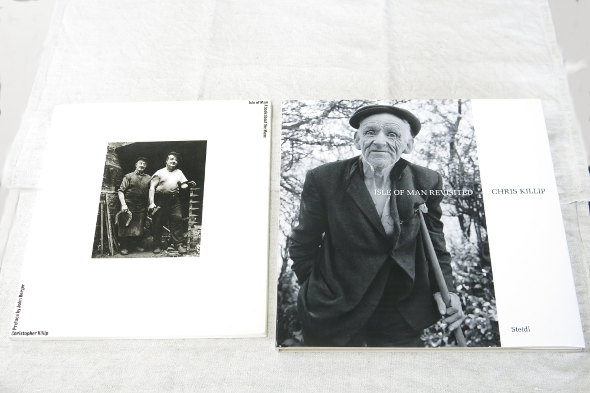
That’s the earlier book on the left. Below, the pair are the other way around:
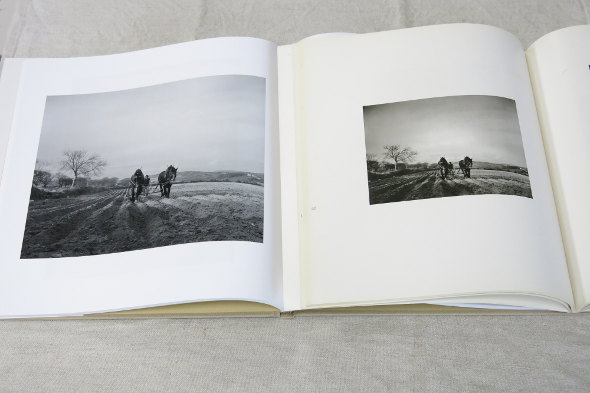
The reproductions are warmer in the older book, and in this example the older reproduction has more contrast and drama as well. So the fan of early Killip will probably want both books.
The new book brings thirty more photographs (says Killip; I haven’t counted), all reproduced much larger and of course to Steidl’s usual high standard. Here’s the Isle of Man as it was in the early seventies, but to my uneducated eye a lot of the photos could have been taken in the fifties or indeed the thirties. (Now that the island’s a tax-dodgers’ haven, I’d guess that it has all the authenticity and allure of Liechtenstein, though with duller weather.) Killip may have used the same kind of camera he later used for In flagrante; but here, as you might expect from the subject, the results resemble that book less than they do the work of Hölttö or at times even Inha.
Disclosure: Nothing. I looked at Steidl’s website (for the first time in months), and there it was. I ordered it from some company selling through the “Abebooks” arm of Amazon.
Chris Killip, Isle of Man revisited. Göttingen: Steidl. ISBN 978-3-86930-959-0. (Steidl’s page about it; review by Marc Pussemier; Killip talks about this and three other books coming out from Steidl.)
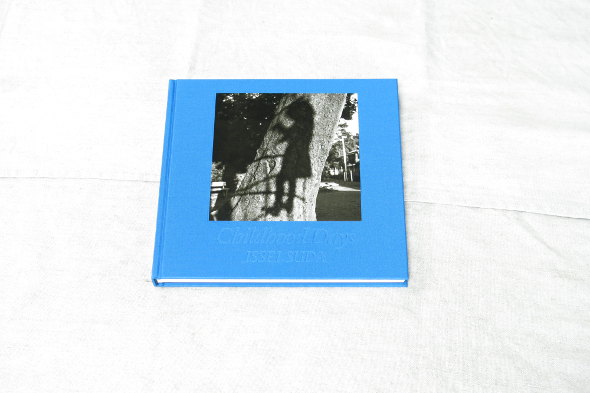
Childhood days. Suda Issei’s archive continues to be mined for bookfuls of excellent stuff . . . as well as items for the completist. In this collection, of early photographs of children, not every photo is strong, but enough are. It’s not only for completists. As is normal for this publisher, the book costs about three times as much as you’d expect. (Worse, as its stock of a book goes down, this publisher tends to jack up the price.) But the printing matches that of Early works 1970–1975 (published two years earlier): it’s as if you’re looking at a bound set of (small) photographic prints. Slimmer than and not quite as good as Early works, but not-quite-top-level Suda is still worth looking out for.
Disclosure: Nothing. I’d heard of it somewhere (I forget where); I went to some photobook fair (my one time in the whole year) and saw it there and bought it. (Also there was his inanimate fetishism book Rei, which tempted me no more than his earlier book Rubber did.)
須田一政 = Suda Issei. Childhood days. Tokyo: Akio Nagasawa Publishing. (Captions [place names and years] in roman script; afterword in Japanese and English. With one cover and with another cover at Shashasha; with one cover and with another cover at Nagasawa. Though Japan Exposures doesn’t have this, it does have other books by Suda that elsewhere are more expensive or simply unavailable.)
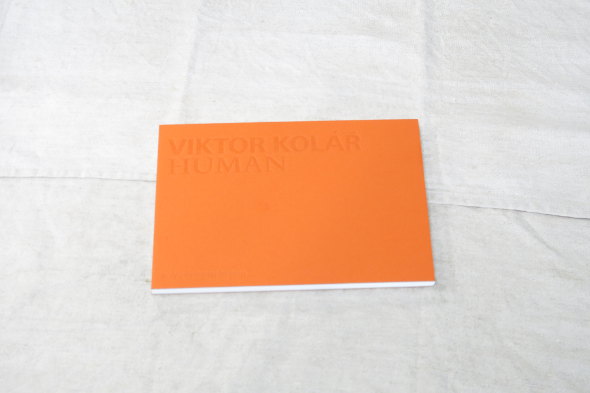
I stupidly didn’t get a copy of Viktor Kolář’s Ostrava when it came out five years ago; at the time of writing, the only copies at Abebooks are each $712 (plus $75 airmail) from some outfit calling itself “Book Deals”. And so I bought Kolář’s Human, a smaller collection of photos from the Ostrava series, and published by Only Photography, whose proprietor has excellent taste in photography. If you don’t already know Kolář, then look here; for me he was one of the main reasons to buy the book of In the face of history (I couldn’t see the show).
The book delivers about sixty photographs, printed very matt(e) and making excellent use of the page (adequate but narrow margins). Once it’s lying open on the desk, it’s excellent.
Otherwise, though . . . the book is an almost perfect rectangular cuboid, bound with one slab of cardboard at the front and another at the back. The slabs aren’t coated and will attract greasy thumbprints. If you drop the book, the lack of any overhang means a lack of impact absorbance, so what’s bound is more likely to be damaged — indeed, I saw another copy that had been dropped and the stitching at the back was coming undone. Memo to book designers: binders had mastered the art of constructing a codex by the 18th century (indeed, probably much earlier, but I haven’t examined any examples); most innovations since then have been degradations (tolerable if the degradation is minor and the saving great); go ahead and innovate if you want, but a bulky, inflexible front and back cover trimmed flush with the pages is just stupid.
Still, the content excuses the odd packaging choices. Kolář’s heroes were Cartier-Bresson, Davidson and Koudelka; and achievement matches aspiration. There are unexpected little delights here too: the woman in plate 59 (1974) — is that Velma Von Tussle from Hairspray? (And get a copy of Kolář’s Canada, 1968–1973 [2013] too, and quickly, before it suffers the fate of the Ostrava book.)
Disclosure: Nothing. I think I first heard of this book from Only Photography’s website. I went to So Books in the hope of finding a copy but did so at least a month too early. I asked for a copy to be reserved for me; it was, and I bought it.
Viktor Kolář. Human. Berlin: Only Photography. ISBN 978-3-9816885-3-5. (Text in German and English; captions. The publisher’s page about this and similarly designed books; video from PhotoBookStore.)
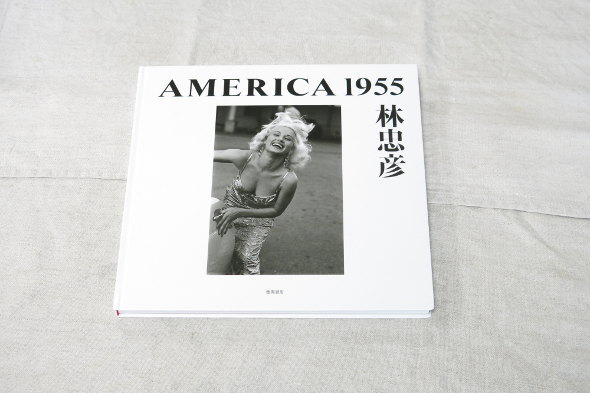
America 1955 . . . ah, let’s consider how we should approach this one:
- photographed in 1955 by Hayashi Tadahiko, a commercially successful photographer (especially of male celebs)
- Hayashi was accompanying Japan’s contestant, Takahashi Keiko, for “Miss Universe”
- contains photos of other celebs (Cary Grant, etc)
- Hayashi and his chums were dissed by Domon and his chums, who were later dissed by the Provoke generation, who themselves were (etc)
- two photos per page on quite a lot of the pages
- published by a large company that rarely if ever puts out photobooks (you can gaze in awe and horror at the top page of its website)
- cover photo shows a stereotypically blonde 1950s girl, posing for max cleavage
So Robert Frank’s America it’s not.
But the book disposes of the beauty queens in just the first (and one of the shortest) of its seven sections. As expected, these particular photos are indeed humdrum. But even in this section (on Palm Beach), one photo is first-rate street work. Some of the shots elsewhere could be by Feinstein, Faurer or indeed even Frank. (And, Araki style, a few are of Hayashi rather than by him.)
Some of this material came out in popular magazines at the time, but that was about the last time they were seen until the 1993 exhibition and catalogue 林忠彦の世界:林忠彦の見た戦後、カストリ・文士・そしてアメリカ = Tadahiko Hayashi (plain beige cover, plentiful on the used book market). But this new book is the first one dedicated to them and it’s most worthwhile.
Disclosure: Nothing. I was in Tsutaya looking for good new Japanese photobooks (and Kenneth Graves’ Home front); most of what I saw was instead the usual art school stuff but here was a lively surprise. So I bought it.
林忠彦 = Hayashi Tadahiko. America 1955. Tokyo: Tokuma Shoten. ISBN 978-4-19-863973-0. (No captions; section headings in English only; explanatory text in Japanese only.)

Slaughter. A booklet of Fukase’s photos of his lovely young wife Yōko in a slaughterhouse; I suppose partly because this was a more sensational backdrop than a junkyard, and partly because, as Yōko observed as far back as 1973, photos of her by Fukase were photos of him. Beautifully printed, and the best of these photos are excellently composed (and not at all repellent); but as a whole it’s just kitschy. Then again, I have minimal interest in the genre (whose deity is Hosoe Eikō) of elegant people striking arty poses amid the rough, rural and rude. I wish I’d bought Fukase’s new cat ’n’ Yōko book instead.
Disclosure: Nothing. I’d not heard of it, but when I paid my sole visit to a photobook fair I must have fallen for the combination of the great name Fukase and the “These are the very last copies” spiel.
深瀬昌久 = Fukase Masahisa. 屠 (To) = Slaughter. Kamakura: Super Labo. ISBN 978-4-905052-81-4. (Review by Olga Yatskevich; video.)
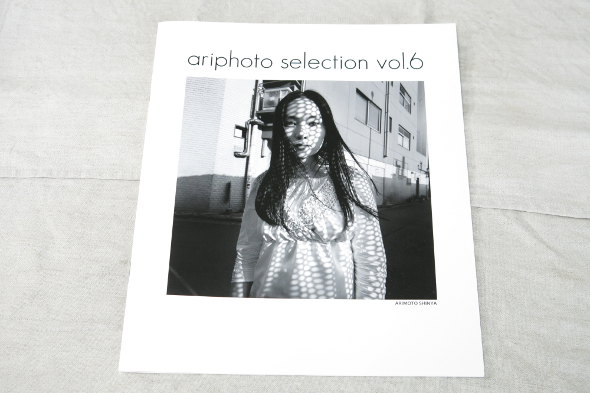
Arimoto Shinya is up to vol. 6 of Ariphoto selection. Big, square B/W as always; and here it’s back to street portraiture: 18 photos, well reproduced, cheap. If only I had wall space, I might have cut up an extra copy and framed the individual pages. (Not that his prints are overpriced: on the contrary.) Ariphoto has been exhibited in Goa; some year soon, Europe and the Americas might catch up.
Disclosure: Nothing in particular. I know the photographer, but not at all well. (We’ve only ever met at Totem Pole, as far as I remember.) There was a pile of vol. 6 at a recent Ariphoto show at Totem Pole, so I bought one from him.
Arimoto Shinya (有元伸也). Ariphoto selection vol. 6. Tokyo: Totem Pole Photo Gallery. (No captions or other text. Heads up at Tokyo Camera Style. Vol. 6 was here within Arimoto’s website, but it has sold out. As have all the five earlier volumes. If there’s ever a volume 7, here’s where we’ll learn of it.)
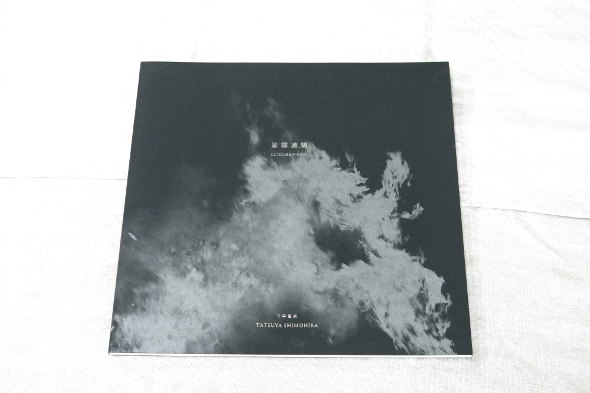
Seisorenkan is the largest, handsomest and best of what I’ve seen among Shimohira Tatsuya’s numerous slim books. Forty or so square B/W plates, of nature, festival events and trappings, festival participants, and more. If it’s reminiscent of Suda and Arimoto (and Kai Keijirō), then who better? I just wish that there were explanations of what we’re looking at. (David Goldblatt’s reputation has survived his provision of explanations.)
Disclosure: Nothing. I’d seen the book at Zen Foto but hadn’t paid attention to it (perhaps because of its formidable page size); however, in my sole visit to a photobook fair I looked in it again and it was good. I did meet the photographer, but only nominally: we exchanged pleasantries and he signed.
下平竜矢 = Shimohira Tatsuya. 星霜連関 (Seisōrenkan) = Seisorenkan. Tokyo: Zen Foto Gallery. (No captions or other text. Here within Shimohira’s website; here at the retailer Shashasha.)
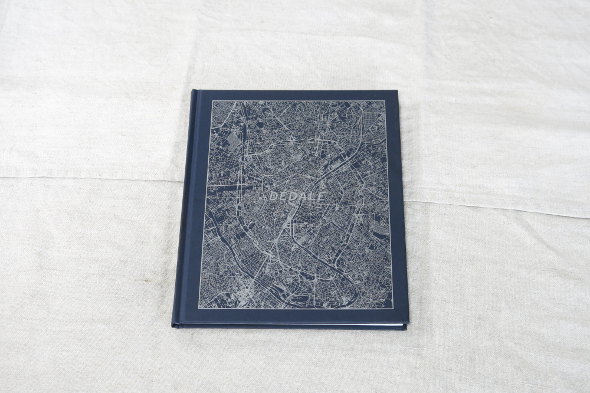
Dédale is Laurent Chardon’s view of crepuscular and nocturnal Paris. We’ve come a long way from Izis: this Paris is dark, decaying and somewhat menacing (though with no cheap effects). Gatefolds show a series of head ’n’ shoulders shots of people making their way through the big city: I think of Joseph Selle and In this dark wood.
Dédale left me a bit blank on first acquaintance but it has since become one of the most intriguing of this year’s bunch. There’s no indication of where in or around Paris the photographs were taken, or indeed of what Daedalus has to do with Paris (though I’ll guess that the title points to the city’s labyrinthine character).
Disclosure: Nothing special. I think I first noticed this at Poursuite’s website. I knew the photographer’s name and we’d years before had a brief email exchange over his Tangente. I ordered the book from Poursuite.
Laurent Chardon. Dédale. [Paris]: Poursuite. ISBN 978-2-918960-82-9. (No captions and, aside from acknowledgments, no text. Its publisher’s page about it; Chardon’s page about it; reviews by Hélène Delye and Jonathan Blaustein; video.)
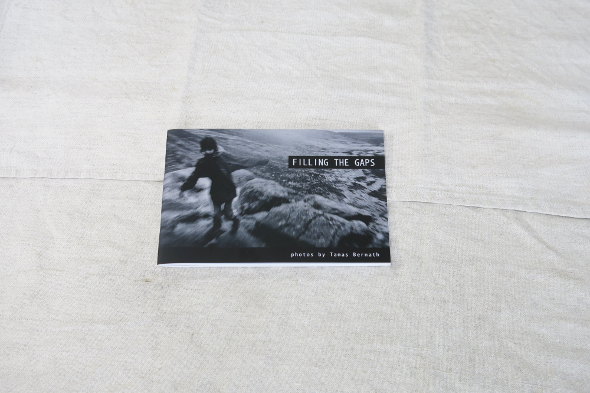
Filling the gaps:
From 2010 to 2011, having finished our studies, and feeling the need to get away for a while before settling down, my girlfriend and I spent a year in a life-sharing community in Ireland. We lived and worked with people with special needs. These photos are a record of that year.
So says Bernàth Tamàs. It’s a fine record and when he brings out an actual photobook (of this or anything else) I want to see it. Meanwhile, this is marketed as a zine and priced like a zine; but both the photography and the printing are far above what I dare expect from a zine.
Disclosure: Nothing. I’d heard of neither the booklet or its photographer until I saw the former at the Independent Photo Book. I ordered my copy from the photographer.
Tamas Bernath (Bernàth Tamàs). Filling the gaps. [Budapest]: the photographer. (A tiny edition, but luckily no mention of “limited”; this deserves a second edition. Book and many of the photos in Bernàth’s website.)
PS (28 Dec): There’s an interview with Bernàth here.
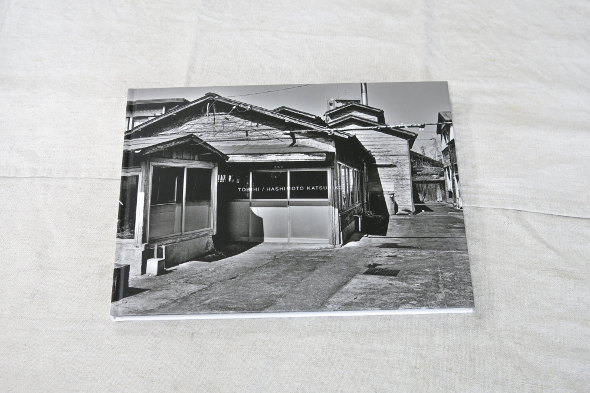
Tohihi: views of well-worn Japan. Hashimoto Katsuhiko waited seventy years before the first book or exhibition of his that I know of; at seventy, he was up to the task of photographing sleepy Japanese structures even if the printing company wasn’t. But that was for the 2012 book もう一つの風景 (Mō hitotsu no fūkei) = The other scenery; three years later he’s back with a new collection: more, bigger and far better reproduced plates (though still in a tiny edition). A few of the buildings here are neat, but most are more or less ramshackle and some seem in danger of collapse. There’s heavy dependence on cheap wooden slats, corrugated iron and nails. They’re the kind of buildings I enjoy seeing when out on a ride.
Disclosure: Nothing. I happened to notice the book while Sōkyūsha’s bookshop, partly because I remembered the photographer’s name from his first book. I liked it; I bought a copy there and then.
橋本勝彦 = Hashimoto Katsuhiko. 遠い日 (Tōi hi) = Tohihi. Tokyo: Sokyu-sha. (Captions give placenames in both Japanese and Roman scripts; afterword in Japanese and English. The Roman-letter title is spelled idiosyncratically [there’s no /h/ sound]; the title means “a/the distant day(s)”. Here at Sokyusha; here at Shashasha.)
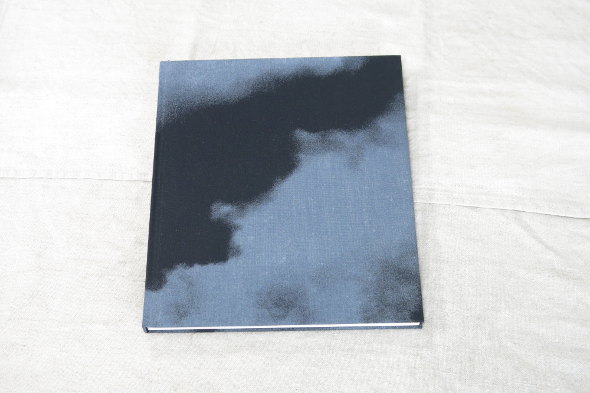
In Kumogakure onsen, Murakami Masakazu presents photos from the start of the century of onsen and surroundings. They’re dark, grainy, and sometimes blurred, rather in the Moriyama style (for which my appetite is very limited). The people look a bit blank; are they perhaps a little bored? (Boredom quickly overcame me during my one visit to an onsen, and that was a long time before attention deficit hyperwebsurfing disorder made unthinkable the prospect of lying in a bath for ages.) I prefer the unpeopled scenes, of funky street scenes and interior decor, etc. The book costs less than the train to and from an actual onsen, I can keep my clothes on (or indeed stay completely undressed) as I go through it, and my phone won’t get wet.

The book is a reworking of Kumogakure onsen yuki (雲隠れ温泉行き), published in 2007 (and on the left above). The earlier book is well produced in its way, and copies are easy to find and cheap — but most photographs are printed across double page spreads and thus disfigured by the gutter. This new book doesn’t cost much more and I think it’s far superior; but in order to escape disfigurement, the “landscape” format photos are printed much smaller than in the old book. Take your choice.
The older book:
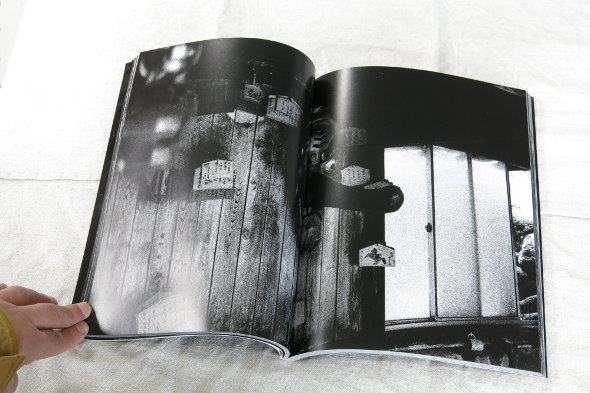
The newer one:
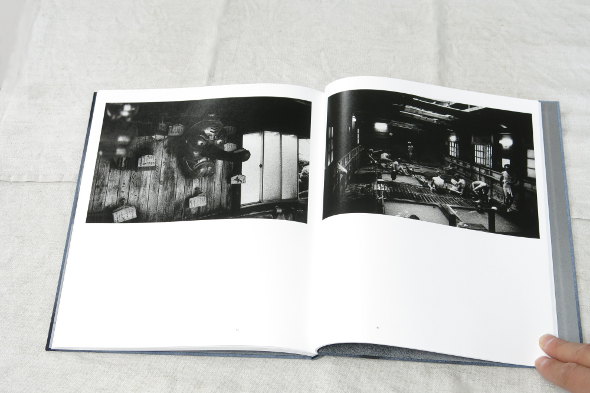
I’ll take smaller and undisfigured, thanks.
Disclosure: I’ve met the photographer a couple of times, I think. But it would have been a couple of years ago and I may be mixing him up with somebody else. I saw the book, I liked it (but the content looked familiar); I forgot about it; later I saw it again somewhere (I forget where) and liked it and bought it. (My copy came with a small print.)
村上仁一 = Murakami Masakazu. 雲隠れ温泉行 (Kumogakure onsen yuki) = Kumogakure onsen: Reclusive travels. Tokyo: Roshin. ISBN 978-4-9907230-2-6. (Captions give placenames in both Japanese and Roman scripts; afterword in Japanese and English. The main title means “hot springs hidden in clouds”. Roshin’s page about the new book; Shashasha’s page; Book of Days’ page.)
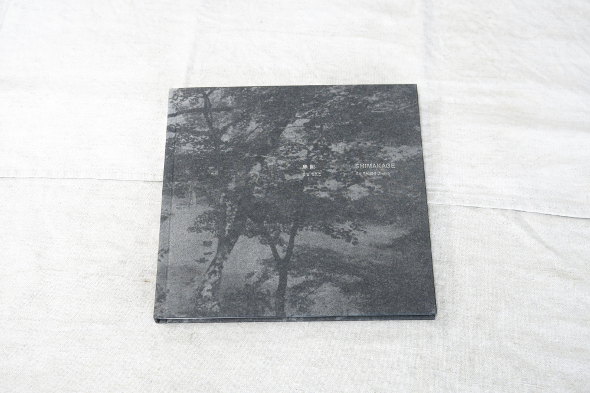
Shimakage has forty-five or so black and grey photographs of coastal and other scenes.
“The works are gelatin silver prints utilizing a retouching technique called zokin-gake (rag-wiping) popular among amateur photographers in Japan during the 1920s and 1930s.” Once we’ve deciphered meaning from the dark greys (a process I enjoyed; not all will) there are a handful of more or less conventional landscapes, but rather more of antipictorialism. I enjoy teasing out meanings from the dark images, but not everybody will.
Disclosure: Nothing. I happened to notice it while Sōkyūsha’s bookshop, and bought a copy there and then. It’s the photographer’s second book, but I don’t recognize her name or (now that I google for them) the cover or title of her first one.
白石ちえこ = Shiraishi Chieko. 島影 = Shimakage. Tokyo: Sokyu-sha. (Captions give placenames in both Japanese and Roman scripts; afterword in Japanese and English. The title means “island shadow”. Exhibition at Morioka Shoten (before that moved and became world-famous); here at Sokyusha; here at Shashasha.)
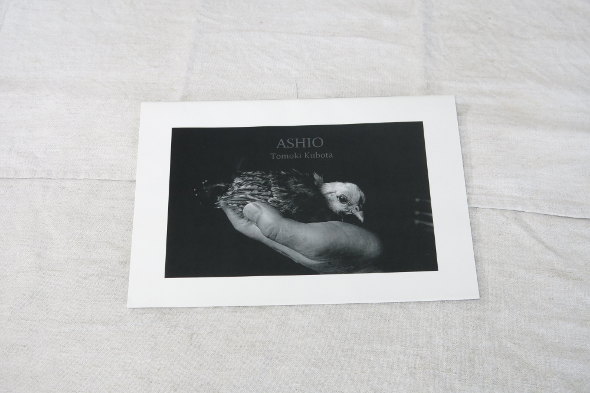
Kubota Tomoki’s Ashio shows Ashio, once the site of a copper mine, severe environmental degradation, and richly deserved riots. The mine closed in 1973. (I suppose that the copper I now consume comes from Congo-Kinshasa or some similarly wretched part of the world. But of course I try to avoid thinking about this.) Kubota’s booklet of 18 B/W photos doesn’t show lingering pollution in any obvious way; Ashio seems a placid place. There’s variety here and the modest scale is just right.
Disclosure: Nothing. I happened to notice it in Sōkyūsha’s bookshop blog, looked out for it the next time I was in the shop, found it, and bought it there and then.
久保田智樹 = Kubota Tomoki. 足尾 = Ashio. [Tokyo]: Red Stream Photography. (No captions, no text, aside from a bilingual colophon. My copy came with a little print. Red Stream’s Facebook post; here at Sokyu-sha.)
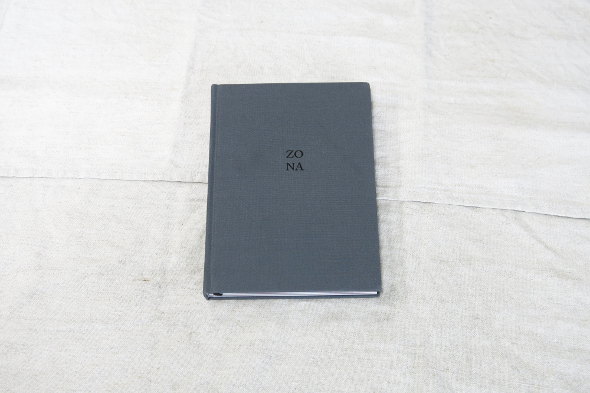
Very unlike State of mind, Nuno Moreira’s previous book, Zona has interior photographs of a girl: her back, her arms and legs, a chair, a table, dried flowers, etc — but mostly the girl. Lots of chiaroscuro, for composition is most important here. There’s bare skin; but I doubt that anyone will find this erotic, or indeed unerotic — it’s doing something quite different. Photographs alternate with trilingual text; both are oneiric but I confess that the text befuddled me (after not much reading, I started to skip it), whereas the photographs continued to fascinate. A very smartly designed package.
Disclosure: I know the photographer, but now that we’re at opposite ends of Eurasia we seldom meet. I was BCC’d in mail he sent to announce the new book; I bought a copy like anybody else.
Nuno Moreira. Zona [Lisbon]: the photographer. ISBN 978-989-20-6083-5. (Text by José Luís Peixoto in Portuguese, Japanese and English. Here and here at Moreira’s site; here at Josef Chladek’s site; review by Christer Ek.)
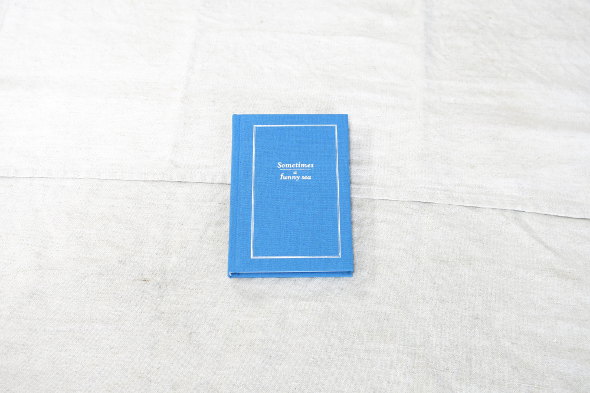
“5 4 3 2 1”, announces the copyright page of Sometimes a funny sea: five printings envisaged, so none of the “limited edition” mumbo-jumbo here, it seems. Though perhaps Samuel Grant is playing around with the book design here. Close to the format of a bunkobon, the book is divided into “Postcards from Europe”, “Polaroids & other pictures (mostly America)”, and “Mexico”; it ends with “The End”. There are landscapes, townscapes, portraits and more, totalling a hundred or so. The reproductions are small and you want — or anyway I want to look closer. There’s some shallow-focus trickery that I suppose was achieved with a tilting lens; and some ageing of the prints (a lot more subtle than what certain hyped photographers are doing these days). If you’re looking for a photobook to read on the train, here it is. Though it makes for enjoyable reading anywhere.
Disclosure: I had La Rue (and had a brief email exchange with the photographer a couple of years back). So when this new book was announced at the Independent Photobook blog I recognized the name. I bought a copy, paying for it like anybody else. (And after I received it I thought a friend would like it so I bought a second copy too.)
Sometimes a funny sea: Selected photographic works by Samuel W. Grant. No place specified: the photographer. (Here at Fluidr; here at BigCartel; here at Storenvy.)
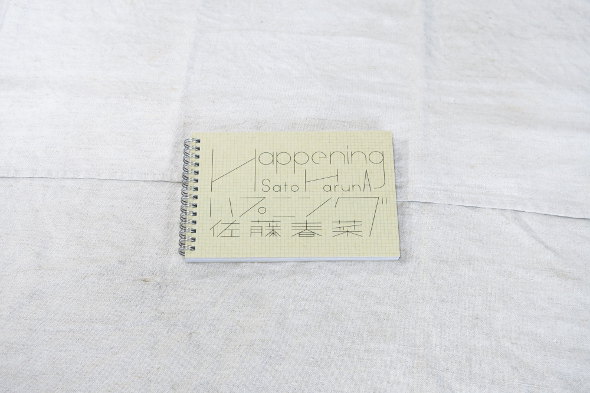
Happening relates Sato Haruna’s misadventures in a short trip to Kuwait that was almost a non-trip . . . but she came out all right in the end. The misadventures themselves didn’t lead themselves to photography; but here’s a good pile of photographs for such a short trip. Though I’ve never been so enthralled by her continuing Ichi no hi series, I did always like her small shows of (B/W) photos from her lightning trips to various places around the world; I hope this little book is a sign that there’ll more of this.
Disclosure: I know the photographer, though not well. I didn’t know of this book. When I paid my sole visit to a photobook fair, there was the photographer, who discreetly drew it to my attention. I bought a copy, on which she drew a little camel for me. (But I think she’d do the same for you, if you asked politely.)
佐藤春菜 = Sato Haruna. ハプニング (Hapuningu) = Happening. Tokyo: Kaido. (Text in Japanese and English. Order from here.)
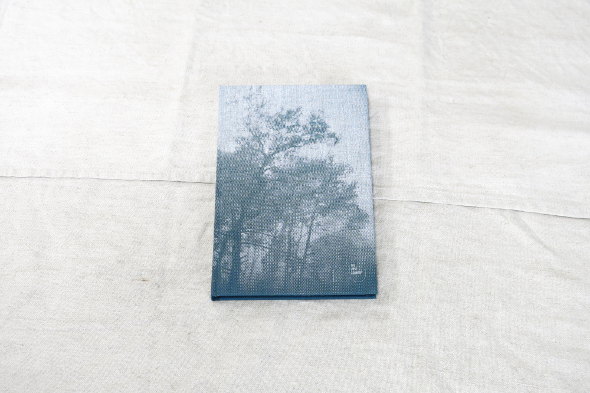
YU: The lost country is a small, slim book, inspired by Rebecca West’s Black lamb and grey falcon (which I haven’t read): the exile returns to a place once named Yugoslavia but now sternly divided, as a result, I suppose, of tribalism, gangsterism, fear and stupidity. Dragana Jurišić is not at all happy with what she experiences, and finds West extraordinarily insightful and prescient. Jurišić’s good with the little text observation; for example (in Bosnia and/or Herzegovina): “Looking at the shops by the side of the road; curtains, garden gnomes, plaster swans and tombstones. This country is fucked.” Well, yes, but it does get me thinking: Kitsch is almost everywhere; couldn’t the same observation be made in many countries? (In Nicaragua, for example, it’s government policy.) And yes, those countries are probably fucked too, but I don’t know how such observations show it. (I’d look at the Corruption Perceptions Index and the consumption of heroin, for starters.) But I mustn’t be too literal-minded: this is a photobook, not an OECD report. There’s more text by Jurišić and more from West’s book (whose prose can be purplish); and of course there are Jurišić’s photos (plus some from the past). Some of these are arresting (the birds in the tree, the man with the dandelion).
For me the book doesn’t quite add up, when I think about it. But when I just browse through it, it works; and I do want to browse through it again. So I’ll hang on to YU (together with B, BY, IS, RUS and U). Yes, it’s compelling (and it’s excellently produced).
Though when I turn to Tomasz Wiech and Michał Olszewski’s Poland: In search of diamonds, I wish they’d turn their wry sensibilities to what was once Yugoslavia (or indeed to anywhere else).
Disclosure: Nothing. Sean O’Hagan’s review of the book interested me so I bought a copy from the photographer as any other interested reader might.
Dragana Jurišić. YU: The lost country. [Dublin]: Oonagh Young Gallery. ISBN 978-0-9929641-1-5. (Here on Jurišić’s website, but already out of print; video.)

Tiksi (Тикси) is on the northern shore of Russia: 71°39′N, with recorded temperature extremes of 34° and −50° and a population of about five thousand. So says Wikipedia. It’s where the photographer Evgenia Arbugaeva comes from. With the help of a girl she met there by chance and who appears in many of the photographs, she portrays Tiksi as, or turns it into, a magical playground. Russia’s far north isn’t an unexplored subject — Ville Lenkkeri’s The place of no roads and the wreckage of Alexander Gronsky’s Norilsk and more — but this is an unfamiliarly appreciative and affectionate view.
Disclosure: Nothing. I saw some of the photos on the Guardian website before there was any mention of a book; later, when I saw a book mentioned, ordered a copy from Book of Days (excellent packing and service).
Evgenia Arbugaeva (Евгения Арбугаева). Tiksi. Paris: The Eyes. ISBN 979-10-92727-03-6. (Text in English. There are generous sets of JPEGs here and here; and here’s an interview with Arbugaeva and Tanya.
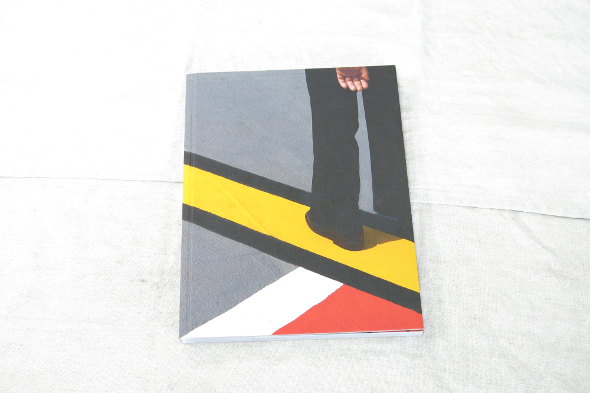
Hold the line: Siegfried Hansen is in In-Public but it’s not what you’d expect . . . perhaps Keld Helmer-Petersen meets Alex Webb: anyway, all bright colours and sharp lines. It’s street design serendipity. There’s certainly a human element: the cover shows half a leg, a quarter of another leg, and half a hand. A woman is at work in an office seemingly suspended over a vertiginous view of what looks like Tokyo (though I can’t quite place it), with tiny, distant signs advertising Marui, Megane Supā and more.
The book had a big impact on me at first sight; but I didn’t want to linger. Returning to it later, I see things I’d missed — and what seemed obvious turns out not to be.
Disclosure: Nothing. It looked good in Colin Pantall’s review, so I ordered a copy from the “Book Depository” (ie Amazon) via “Abebooks” (ie Amazon).
Siegfried Hansen. Hold the line. Dortmund: Kettler. ISBN 978-3-86206-435-9. (No text. Seemingly out of print at its publisher, but the book doesn’t mention that the edition is “limited”, so we can hope. Or you could try writing to Hansen. Its publisher’s page about it; Josef Chladek’s coverage.)
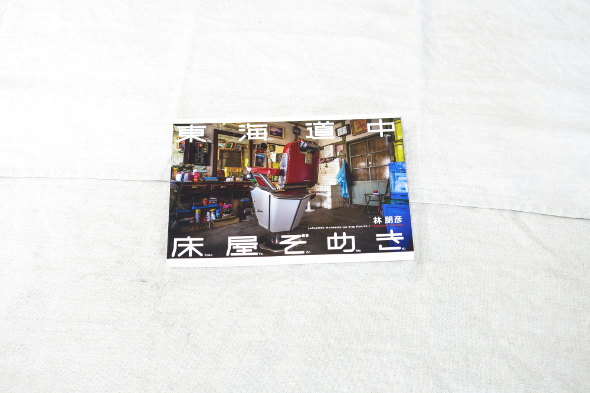
Japanese barbers on the route 1 brings you 92 views of barbers’ establishments along Tōkaidō or route 1. A generation ago people in Tokyo wouldn’t have imagined that most cafés would be chainified (Doutor, Crié, Veloce, Starbucks, etc); a generation from now I’d guess that barbers will be chainified too. But this hasn’t happened yet; and for now barbers exemplify ruggedly vernacular design (or undesign). Here’s a book that does for the Japanese barber what numerous photobooks have done for the US diner. The format is close to that of various huge-selling photobooks (example), and it’s priced to move.
Disclosure: Nothing. I saw it at Sōkyūsha’s bookshop, liked it, and bought it.
林朋彦 = Hayashi Tomohiko. 東海道中床屋ぞめき (Tōkaidōchū tokoya-zomeki) = Japanese barbers on the route 1. Tokyo: Fujin-sha. ISBN 978-4-938643-61-4. (Here on its publisher’s website; here at Sokyu-sha.)
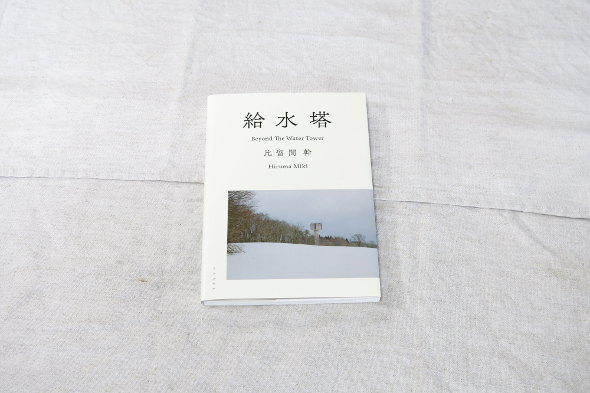
Beyond the water tower has photographs of over sixty Japanese examples of water tower. I don’t know how representative this sample is. (I’m surprised to realize that I’ve paid little attention to water towers — unlike incinerator chimneys, which I notice all the time.) But there’s a wide variety here. The “beyond” of the English title is a mystery: some towers are shown with minimal surroundings, others with more; rather too many are shown in twilight or at night (no such additional drama was needed). If only this degree of imagination went into the design of, say, Japanese schools. (Although the design of water towers pales beside that of playground equipment, which may be to Japan what bus stops are to the spawn of the Soviet Union.)
Disclosure: Nothing. I saw it at Aoyama Book Center (Roppongi), liked it, and bought it.
比留間幹 = Hiruma Miki. 給水塔 (Kyūsuito) = Beyond the water tower. Tokyo: Little, More. ISBN 978-4-89815-419-9. (Captions and text in Japanese only. Samples at Hiruma’s website; the book at its publisher’s website.)
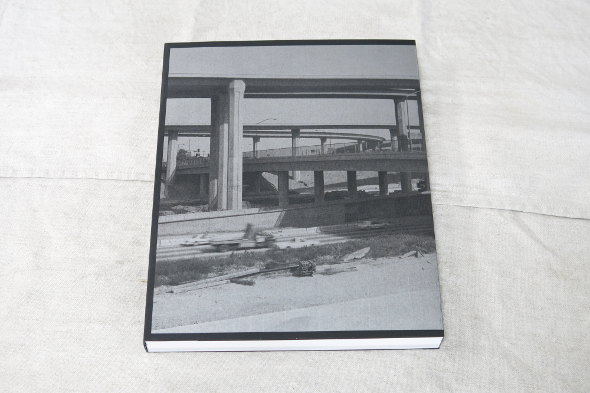
Imperial Courts 1993–2015 has just reached me. Yes it looks good, but I’ve hardly started to digest its content. You’ll have already read about it elsewhere.
Disclosure: Nothing. I liked what Mrs Deane wrote about the photos and what Rob Hornstra and Stanley Wolukau-Wanambwa wrote about the book. (Yes, I was actually swayed by “Best of 2015” lists.) So I ordered a copy from Book of Days.
Dana Lixenberg. Imperial Courts 1993–2015. Amsterdam: Roma. ISBN 9789491843426. (Page in its publisher’s website; exhibition notice; sample photos, photos of scans, essay by Lixenberg here; George Pitts’ review.)
Not much documentary or street stuff above, in large part because I didn’t see much. I suppose Tsutaya has calculated that its customers are more interested in the “young hipsters prancing around naked”, “people with blank expressions standing in front of boring backdrops”, “my tragicomic relationship with my nutty mom/ex/etc”, “my sweet relationship with my wife/husband”, and other genres. Which are welcome to flourish, but which don’t excite me. No, for me the number one boss photobook at Tsutaya remains the facsimile Decisive Moment. (Yes, as Sean O’Hagan says, its photography is outmoded. Time for the modes to change.)
I haven’t seen enough even to pretend that the pile above are the best, even according to my own unfashionable criteria. I’ve only intermittently paid attention to what’s been on the shelves of any bookstore, haven’t once been in any photobookstore outside Tokyo, have read few recommendations, haven’t seen most of what’s on others’ “best of” lists (eg I haven’t seen even one of the eight Teju Cole lists, have (like everyone) been locked out of the library of the Tokyo Museum of Photography, and have been determined to accumulate fewer kilograms than I’d done the previous year. So what you see is all of what I bought. Though I omitted (i) a handful of Café Royal booklets, because once you hear about them from anywhere other than CRB they’re already gone; and (ii) a pedestrian survey, which I seem to have mislaid, of the work of Hamaya Hiroshi, who deserves far better.
One that I didn’t get: The photography in Songbook is great; it can stand without the whimsical and bulky trimmings. (If only it had instead been published by Poursuite!) I might buy a copy of a second, cheapskate edition.
Photobooks of the year that I haven’t seen but hope to: Irina Popova, Welcome to LTP; Kenneth Graves, The home front; Stephan Vanfleteren, Charleroi: Il est clair que le gris est noir; Paolo Woods and Gabriele Galimberti, The heavens: Annual report; David Solomons, Up west.
Photobooks of 2016 I’m most looking forward to: Chris Killip, In flagrante two; Rosalind Fox Solomon, Got to go; Jason Eskenazi, The black garden; plus what I haven’t heard of and can’t even start to imagine.
Photobook I bought most recently: Rolf Reiner Maria Borchard, Riga (1999): a staid but handsome portrait of that city, bought at the Iidabashi branch of Book Off on 22 December for just ¥200 (xe.com says €1.52).
Best non-photo book recommended to me this year by any photographer: Richard McGuire, Here.
Want other, better informed lists? Here’s a list of links to them. (How many will there be? There were at least 22 for 2011, 56 for 2012, 87 for 2013 and 58 for 2014.) For another view of mostly Japanese books, see John Sypal’s list.
If you take this stuff seriously, try this; and if like me you don’t, try this.
beyond train windows
Posted: 05/11/2011 Filed under: Books | Tags: black and white photobooks, Jarret Schecter, Laurent Chardon, Mongolia, photobooks from Britain, photobooks from France, Russia, train journeys Leave a comment
I bought Jarret Schecter’s book Russia off Track because I was ordering a pile of other stuff anyway, the subject interested me, the book was from Trolley (which had never disappointed), and it was going very cheap.
This book starts rockily. The preface by Schecter tells us: Although purported to be one-dimensional, a rich photograph laden with past stillness and future motion, is multi-layered by time, space and meaningful consequence.
One-dimensional? (And that’s just for starters.)
Schecter goes on to say that the land between Moscow and Vladivostok, besides being dominated by forests and fields, is littered with poor villages, dilapidated industrial plants, and a smattering of non-descript cities and so on. He draws parallels between the heartlands of Russia and the US, the latter being the subject of an earlier book of his (which I haven’t seen), America off Track.
Well, yes. And of course both the US and Russia are off the rails and run by robber barons. And I’m all for photography that shows this, if it’s good.
Let’s put aside the preface and see what we have here.
On each recto is one photograph, facing it is its caption. There are no page numbers and no section breaks.
The first photograph, “Dusk on the Siberian plains”, is indeed of a nondescript landscape. Fine, it puts me in the mood.
Next, “Lake and village in Siberia” and then “Village in the Far East region of Russia”. The former shows camera shake, but not enough for any interesting effect. Both have pleasing blues and greens.
An “old factory” and then an “industrial complex”. The former is a study in beiges, but there’s enough of a spherical blue object in the foreground to interfere yet not really enough of it to do more than interfere. Though the “complex” is dirty, its windows are still in place. (Trackside Russia isn’t as bad as trackside Britain!)
An “apartment building” (very slightly blurred). Now, this building is rather jolly. I’d change the framing somehow, or wait till the two cars in the front had gone — but of course one’s options are limited when in a train.
A blurry scene at a train station near Omsk. Oh come on — this was one for the delete button.
Next, a good one of five people waiting on the platform of Petrovsk-Zabaykalsky station:

Now a bit of a disappointment: a differently angled photograph of the same platform, emphasizing a huge and splendid mural. But the mural doesn’t help what’s in the foreground or vice versa. If we want a photograph of the mural (yes please, as none is easily googlable), then let’s have an uncluttered photograph of the mural. Except of course this isn’t possible, for a photographer stuck in the train (even though the ticket allows breaks in the journey).
And then a major problem starts for me, with the caption “Anonymous apartment buildings in the Ural region”:

“Anonymous” is surely metaphorical: these are cookie-cutter buildings, the Soviet prole equivalent of Levittowns. Hang on: there are attractive little red stripes near the roof, and a sunrise design for the window grilles in the foreground. And look closely and you see that the inhabitants don’t merely differ by satellite dish; they’ve done different things with their balconies. But no, Schecter says the buildings are “anonymous”.
And such gloomy descriptions continue. Just a few pages later, we get: “Nameless apartment towers in Central Russia”, “Car speeding away from a lonely Siberian village”, “Deserted street in a Siberian village”, and “Desolate town in Eastern Siberia”. Schecter seems to be trying to tell me what impression I should get. But he fails, partly because I’m not happy to be told what impression to get, and partly because I’ve no reason to think he knows any more than I do.
What does residential “anonymity” tell us? Turn to Bill Owens’ 1973 book Suburbia:

Caption to the photograph on the right (p.9 of the “new & improved” 1999 edition): I find a sense of freedom in the suburbs…. You assume the mask of suburbia for outward appearances and yet no one knows what you really do.
Some food for serious thought there.
Let’s ignore the captions, and accept that what goes on in buildings within view of the Trans-Siberian Railway is something that we can only guess at.
The route is very long. (An excellent map is provided at the front.) Stamina permitting, there’s a lot of time during which one can point a camera through the window, and Schecter indeed shows stamina and at times the results are striking.



(For more examples, see Trolley’s page about the book — which may take some time to load.)
The book contains roughly a hundred photographs. There’s a good, small, differently-captioned, thirty-photograph book in it. Or Schecter might combine the thirty with other views of Russia. (For suggestions, see further below.)
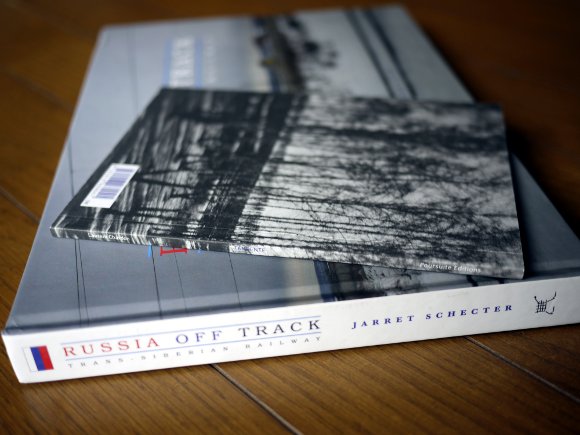
Laurent Chardon’s Tangente (shown above upside down) is a lot smaller.
The French word tangente has pretty much the same range of meanings as the English tangent; but the English translation (supplied as a separate sheet) of the preface glosses it as on a limb.
The quote-dropping preface (Debord, Merleau-Ponty) — reproduced here — tells us that . . . Chardon shows how the link between the temporal and the spatial operates as a continuum, a “non-interruption” of the world etc etc; it’s somniferous stuff, but it does say that he went by train from Moscow to his point de contact [?] and destination of Ulan Bator. And it points out that he used a toy camera (as is pretty obvious, though I suppose Photoshop has a “Holga” setting).
The book has 23 photographs, without captions or further explanation. A little sample of what may or may not be Ulan Bator:


Towards the end of the book, Chardon is on the train:

So maybe this is not Chardon’s journey to and stay in Ulan Bator, but instead his stay there and journey back. Or maybe the photographs are presented in reverse chronological order. Or again perhaps the order is arbitrary. (But there definitely are yurts on display, so no this isn’t just something wittily cooked up in Transylvania or wherever.) Being more conventional than I usually like to admit, I would like to know which photos were taken in Ulan Bator, which from the train within Mongolia, and which within Russia.
Even with no explanation, these are splendidly dark and gloomy photographs. We’re very far from tourist-bureau Mongolia. But Chardon doesn’t tell us this, and so much the better for this blackly delightful little book.
Here’s Mrs Deane’s review of Tangente (which prompted me to order the book), here’s Douglas Stockdale’s review, and here’s the publisher’s page.
Let’s return from Mongolia to Russia. The unsigned afterword to Russia off Track concludes: . . . Russia’s future trajectory is perhaps best contemplated peering out of the window on the world’s longest train ride.
I really wonder. And as for Russia’s present, one could photograph life directly visible in and from the train, or one could just get off the train and look around.
First, life within and nearby. Evi Lemberger has done this well. (Fewer but bigger jpegs here.) Here she is appealing for help, either for this series or for a follow-up.
And away from the track? Writing about Owens’ Suburbia, Cynthia Morrill asks: In 2000, would a California visual anthropologist be welcomed as Owens was, or would she be escorted out of the gated community by a private security force?
Bieke Depoorter went ahead and tried the Russian equivalent — indeed, something much more daring. The story is written up in various places (e.g. here). The excellent results are here and here. They’re already in a book. And yes, she’s done it in the US too (see this), and another book is said to be in the works.
Just photographing the view from the Trans-Siberian Railway isn’t easy. I’m enjoying the view via a set of videos presented by Russian Railways and Google.ru: here in English (though with the book readings still in Russian) and here in Russian. Here are the photographs by Anton Lange (Антон Ланге) that accompany this; because it is after all a PR exercise, they’re rather postcardy, but they’re worthwhile all the same. It’s just part of a bigger project to photograph the whole of Russia from/with the railway; the project’s multilingual site is here, and Lange is interviewed about it here.
Copyright of the images shown above of course belongs to the respective photographer or publisher, not to me.
January 2012 PS: See also this (NPR) by David Greene. (There’s something about this here at the NYT.)